Ready to learn the names of fruits in Korean? We will cover those, as well as the names for vegetables and nuts in the Korean language.
If you plan to go grocery shopping in Korea or visit a Korean restaurant, learning these terms is for you! We’re going to cover the most important words you should learn first, as well as give you some example sentences so you can put them to use.
These Korean nouns are going to be a key part of your plan if you’re learning Korean or have an interest in Korean culture. The good news is that you already know a lot of these Korean words (we’ll explain how).
Contents
How to say “fruits,” “vegetables,” and “nuts” in Korean
Here’s a video that will teach you how to say “fruits,” “vegetables,” and “nuts” before we head on to learning the different Korean terms under these categories.
As we cover the terms for fruits, vegetables, and nut vocabulary words in the Korean language, you’ll notice that they’re written in both Hangeul (Korean Alphabet) and in romanized Korean. The English spelling is just an approximation of the sounds. Your pronunciation will improve significantly if you learn Hangeul.
Grab your free guide here and learn Korean in about 1 hour.
List of Fruit Names in Korean
Here is a list of different fruits in Korean, and most of these can be found within Korea. Keep in mind that some of the fruit names will sound very similar to the English word. For example, 레몬 (remon | lemon) sounds just like “lemon.” That’s the beauty of Konglish and Korean loan words: You already know them!
We’ve also added sample sentences in some vocabulary below. Use them to practice speaking and reading. They’re useful for understanding Korean grammar better. You might also try combining sentences with Korean conjunctions or Korean particles.
If you’re craving freshly squeezed fruit ades while in South Korea, knowing these terms will help. Let’s start off with the word for fruit.
“Fruit” in Korean
The word for “fruit” in Korean is 과일 (gwail).
저는 과일을 다양하게 섞어놓은 샐러드를 좋아해요. (jeoneun gwaireul dayanghage seokkeonoeun saelleodeureul joahaeyo.)
I like fruit salads with a variety of fruits mixed together.
Korean fruits are categorized into different kinds below.
List of fruits in Korean (Berries)
Next, we’ll cover some of the berry fruits. Most of these fruits sound like their English counterparts, except for Korean strawberries and raspberries. Both of those words have Korean double consonants, so make sure you pronounce them correctly.
| Fruit in Korean | English |
|---|---|
| 블랙베리 (beullaekberi) | blackberry |
| 블루베리 (beulluberi) | blueberry |
| 산딸기 (santtalgi) | raspberry |
| 크랜베리 (keuraenberi) | cranberry |
| 딸기 (ttalgi) | strawberry |
“Strawberry” in Korean
The “strawberry” in Korean is 딸기 (ttalgi). If you like fresh whole strawberries, there are plenty of areas in South Korea where you can go strawberry picking.
딸기 잼을 빵 위에 바르면 맛있어요. (ttalgi jaemeul ppang wie bareumyeon masisseoyo.)
It tastes delicious when you spread strawberry jam on bread.
List of fruits in Korean (Citrus)
Here are some of the citrus fruit names in Korean. They are known to have plenty of health benefits.
| Fruit in Korean | English |
|---|---|
| 레몬 (remon) | lemon |
| 라임 (raim) | lime |
| 오렌지 (orenji) | orange |
| 귤 (gyul) | tangerine |
| 자몽 (jamong) | grapefruit |
“Orange” in Korean
오렌지 (orenji) is the Korean word for “orange” that refers to the fruit. However, a different term is used for the color orange, which is 주황색 (juhwangsaek).
Sample Sentence:
매일 아침에 오렌지주스를 마셔요. (maeil achime orenjijuseureul masyeoyo.)
I drink orange juice every morning.
“Lemon” in Korean
The Korean word for “lemon” is 레몬 (remon).
저는 레몬 차를 좋아해요. (jeoneun remon chareul joahaeyo.)
I like lemon tea.
Now that you know the fruit names in Korean, let’s cover the Korean vegetables.
Other fruits in Korean
And now for the remainder of the fruits. If you want an easy way to remember the Korean word for “apple,” there’s a Korean joke about it that makes it hard to forget.
| Fruit in Korean | English |
|---|---|
| banana |
|
| apple | |
| kiwi | |
| 망고 (manggo) | mango |
| pear, also called Korean pears | |
| 포도 (podo) | grapes |
| 파인애플 (painaepeul) | pineapple |
| 복숭아 (boksunga) | peach |
| 수박 (subak) | watermelon |
| 체리 (cheri) | cherry |
| 자두 (jadu) | plum |
| 살구 (salgu) | apricot |
| 감 (gam) | persimmon |
| 석류 (seongnyu) | pomegranate |
| 멜론 (mellon) | melon |
| 올리브 (ollibeu) | olive |
| 파파야 (papaya) | papaya |
| 코코넛 (kokoneot) | coconut |
| 용과 (yonggwa) | dragonfruit |
| 대추 (daechu) | jujube |
| 승도복숭아 (seungdoboksunga) | nectarine |
“Apple” in Korean
The Korean word for “apple” is 사과 (sagwa). However, some also use its Konglish term, 애플 (aepheul).
Fun fact: 사과 (sagwa) also means “apology” in Korean. So in Korea, when people want to apologize to someone, they sometimes give an apple to express how sorry they are.
사과는 건강에 좋은 과일입니다. (sagwaneun geongange joeun gwairimnida.)
Apples are healthy fruits.
“Banana” in Korean
In the Korean language, this fruit is still called 바나나 (banana). Remembering it is easy as it is pronounced the same way as its English word. There’s also a famous banana-flavored drink called Banana Milk (바나나맛 우유 | bananamat uyu). A sweet flavor that is an ultimate must-try!
바나나는 에너지를 공급해줍니다. (banananeun eneojireul gonggeupaejumnida.)
Bananas provide energy.
“Mango” in Korean
The word for “mango” in Korean is 망고 (manggo). Just like banana, it’s very easy to remember.
망고는 달콤하고 과즙이 풍부해요. (manggoneun dalkomhago gwajeubi pungbuhaeyo.)
Mangoes are sweet and juicy.
“Peach” in Korean
The word for “peach” in Korean is 복숭아 (boksunga). If you’re familiar with Kakaotalk, one character named Apeach (어피치) was created based on the peach fruit. Peaches are seasonal fruits that are popular during summer.
복숭아는 여름철에 잘 익고 맛있어요. (boksunganeun yeoreumcheore jal ikgo masisseoyo.)
Peaches ripen well during the summer season and taste delicious.
“Persimmon” in Korean
The word for “persimmon” in Korean is 감 (gam). This fruit is used for the Korean drink 수정과 (sujeonggwa) mixed with ginger, cinnamon, and brown sugar.
감은 가을의 대표적인 과일입니다. (gameun gaeurui daepyojeogin gwairimnida.)
Persimmons are representative fruits of autumn.
“Pear” in Korean
The Korean word for “pear” is 배 (bae). The same term is also used for Korean pears, Korean snow pears, or Korean apples.
배는 생과일로 먹을 수도 있고, 요리에 사용할 수도 있어요. (baeneun saenggwaillo meogeul sudo itgo, yorie sayonghal sudo isseoyo.)
Pears can be eaten as fresh fruit or used in cooking.
“Pineapple” in Korean
“Pineapple” in Korean, which sounds very similar to its English counterpart, is called 파인애플 (painaepeul). This tropical fruit is known to be a great source of Vitamin C!
Sample Sentence:
제가 가장 좋아하는 과일은 파인애플이에요 (Jega gajang joahaneun gwaireun painaepeurieyo)
My favorite fruit is pineapple.
“Watermelon” in Korean
The Korean word for “watermelon” is 수박 (subak). This huge fruit is typically sliced and shared by many, especially during summer in South Korea. This is different from Korean yellow musk melons or 참외 (chamoe), or the Korean melon 멜론 (mellon).
Sample Sentence:
수박을 몇 조각 먹을래요? (subageul myeot jogak meogeullaeyo?)
How many slices of watermelon do you want to eat?
Vegetable Names in Korean
Food plays an important role in Korean culture. This cuisine includes vegetables in most recipes too, so if you’re interested in anything about Korean food, learning this vocabulary along with other food-related words is essential. After all, this makes Korean dishes very healthy! Here are some vegetable names in Korean.
“Vegetable” in Korean
Before we learn the terms for different vegetables in Korean, let’s start with “vegetable” first. The word for vegetable in Korean is 야채 (yachae).
야채를 많이 섭취하는 것은 건강에 좋습니다. (yachaereul mani seopchwihaneun geoseun geongange joseumnida.)
Consuming a lot of vegetables is good for your health.
List of different vegetables in Korean
Below is the list of the different vegetables and how they’re called in Korean.
| Vegetables in Korean | English |
|---|---|
| 야채 (yachae) | vegetables |
| 샐러드 (saelleodeu) | salad |
| lettuce | |
| 양배추 (yangbaechu) | cabbage |
| 배추 (baechu) | Chinese cabbage |
| cucumber | |
| tomato | |
| potato | |
| 시금치 (sigeumchi) | spinach |
| 당근 (danggeun) | carrot |
| 아보카도 (abokado) | avocado |
| 옥수수 (oksusu) | corn |
| 셀러리 (selleori) | celery |
| 애호박 (aehobak) | zucchini |
| 무 (mu) | radish |
| 껍질콩 (kkeobjilkong) | green beans |
| bell pepper, paprika | |
| garlic | |
| 버섯 (beoseot) | mushrooms |
| beans | |
| 파 (pa) 대파 (daepa) | spring onion, leek |
| 부추 (buchu) | chives, leek |
| 여주 (yeoju) | balsam pear |
| 연근 (yeongeun) | lotus root |
| 고구마 (goguma) | sweet potato |
| 고추 (gochu) | red pepper |
| 생강 (saenggang) | ginger |
| 양파 (yangpa) | onion |
| 인삼 (insam) | ginseng |
| 후추 (huchu) | pepper |
| 브로콜리 (beurokolli) | broccoli |
| 호박 (hobak) | pumpkin |
| 순무 (sunmu) | turnip |
| 가지 (gaji) | eggplant |
“Pumpkin” in Korean
The word “pumpkin” in Korean is 호박 (hobak). This vegetable is often used to make porridge or soup by Koreans. 호박죽 (hobakjuk) is used to call “pumpkin porridge” while 단호박죽 (danhobakjuk) is used to call “sweet pumpkin porridge.” This vegetable is also often seen during Halloween.
호박은 한국 요리에서 자주 사용되는 재료입니다. (hobageun hanguk yorieseo jaju sayongdoeneun jaeryoimnida.)
Pumpkins are commonly used ingredients in Korean cuisine.
“Carrot” in Korean
“Carrot” in Korean is called 당근 (danggeun). The same term is used as a Korean slang to say “of course,” which is 당연하지 (dangyeonhaji), since they sound very similar.
당근은 비타민 A가 풍부한 채소입니다. (danggeuneun bitamin eiga pungbuhan chaesoimnida.)
Carrots are vegetables rich in vitamin A.
“Onion” in Korean
The Korean word for “onion” is 양파 (yangpa). If you mean to say “spring onion” in Korean, the term you can use is 파 (pa).
양파는 요리에 특별한 맛을 더해줍니다. (yangpaneun yorie teukbyeolhan maseul deohaejumnida.)
Onions add a special flavor to dishes.
“Bell Pepper” in Korean
The term for “bell pepper” in Korean is 파프리카 (papurika) or 피망 (pimang).
파프리카는 색깔도 다양하고 요리에 활용하기 좋은 야채입니다. (papeurikaneun saekkkaldo dayanghago yorie hwaryonghagi joeun yachaeimnida.)
Bell peppers come in various colors and are versatile vegetables for cooking.
“Cucumber” in Korean
The word for “cucumber” in Korean is 오이 (oi). This is the key ingredient in the Korean side dish, 오이무침 (oimuchim).
Sample Sentence:
슈퍼에 갈 때 오이 3개 사 주세요. (syupeoe gal ttae oi segae sa juseyo.)
Please buy three cucumbers when you go to the grocery store.
“Lettuce” in Korean
The Korean word for “lettuce” is 상추 (sangchu).
상추는 샐러드에 신선한 식감을 더해줍니다. (sangchuneun saelleodeue sinseonhan sikgameul deohaejumnida.)
Lettuce adds a fresh texture to salads.
“Potato” in Korean
You can say “potato” in Korean as 감자 (gamja).
감자튀김은 저녁 야식으로 인기가 많아요. (gamjatwigimeun jeonyeok yasigeuro ingiga manayo.)
Potato fries are popular as an evening snack.
Names of Nuts in Korean
Lastly, below are the different names of nuts in Korean, along with the Korean term for “nuts.”
“Nuts” in Korean
The word for “nuts” in Korean is 견과류 (gyeongwaryu).
견과류는 간식으로 좋고 영양가도 높습니다. (gyeongwaryuneun gansigeuro joko yeongyanggado nopseumnida.)
Nuts are good snacks and are also highly nutritious.
| Nuts in Korean | English |
|---|---|
| 견과 (gyeongwa) | nut |
| 아몬드 (amondeu) | almond |
| 땅콩 (ttangkong) | peanut |
| 호두 (hodu) | walnut |
| chestnut | |
| 잣 (jat) | pine nuts |
| 캐슈넛 (kaesyuneot) | cashew |
| 해바라기씨 (haebaragissi) | sunflower seed |
Wrap Up
Now that you’ve learned all about what completes a Korean meal, a.k.a. Korean fruits, nuts, and vegetables, it’s time to start making sentences like the examples above! They’ll definitely come in handy if you’re living in Korea or plan on shopping at a Korean supermarket abroad. Perhaps you also plan to visit Korea or specific areas like Jeju Island for a taste of these Korean fruits and Korean vegetables and a taste of Korean culture too!
What’s your favorite fruit? Is it a banana, orange, pineapple, or peach? Or maybe it’s a lemon or plum? Do you prefer citrus or tropical fruit? Show us your Korean fruit, vegetable, and nut skills in the comments below!
Picture Credit: Bigstock

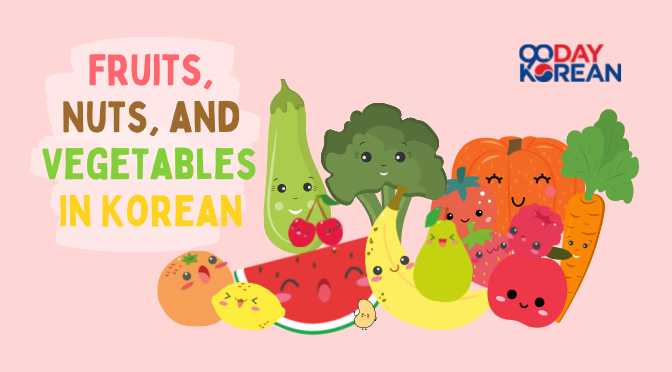
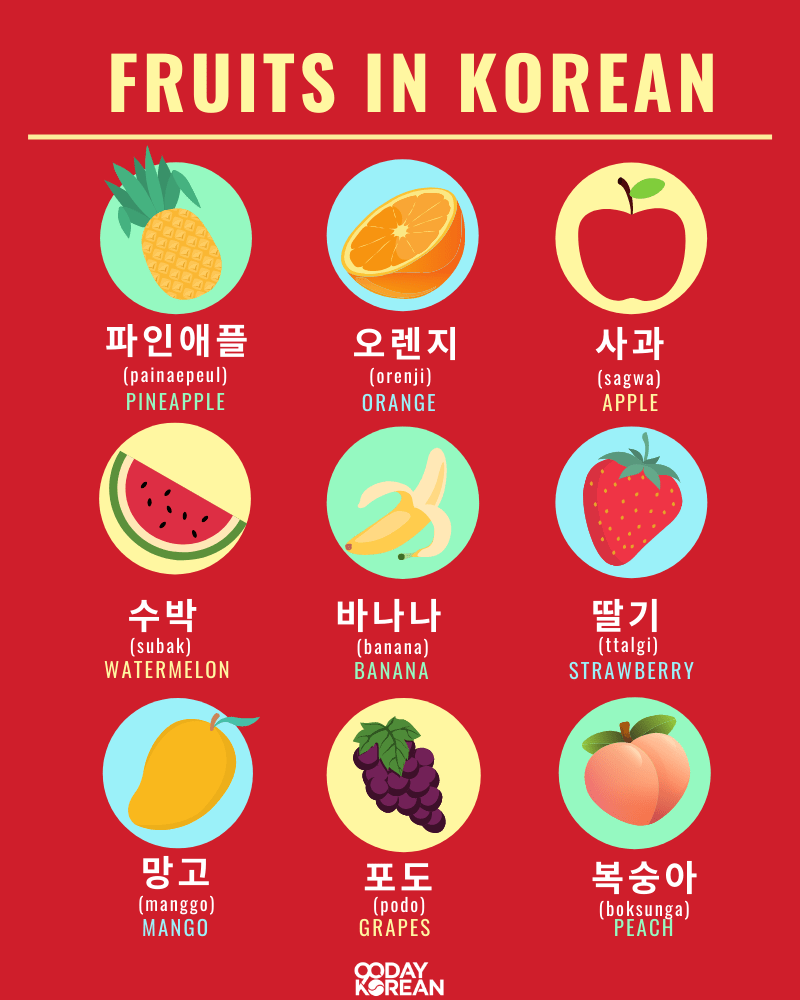
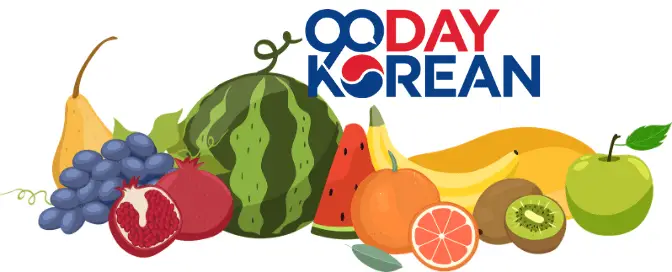
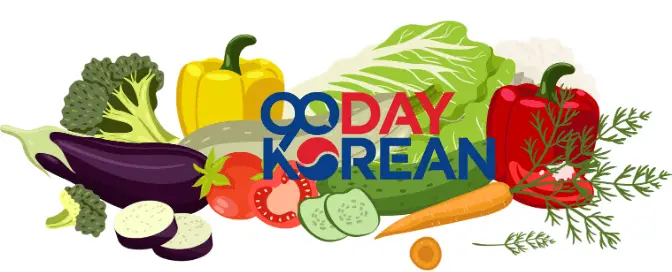
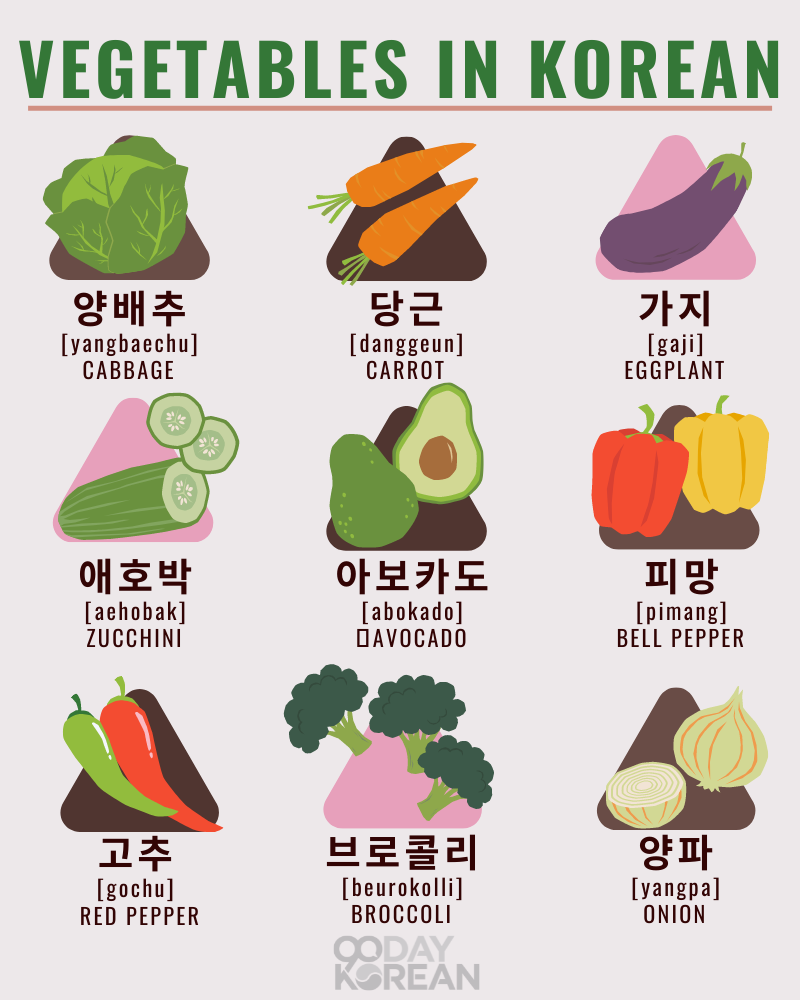
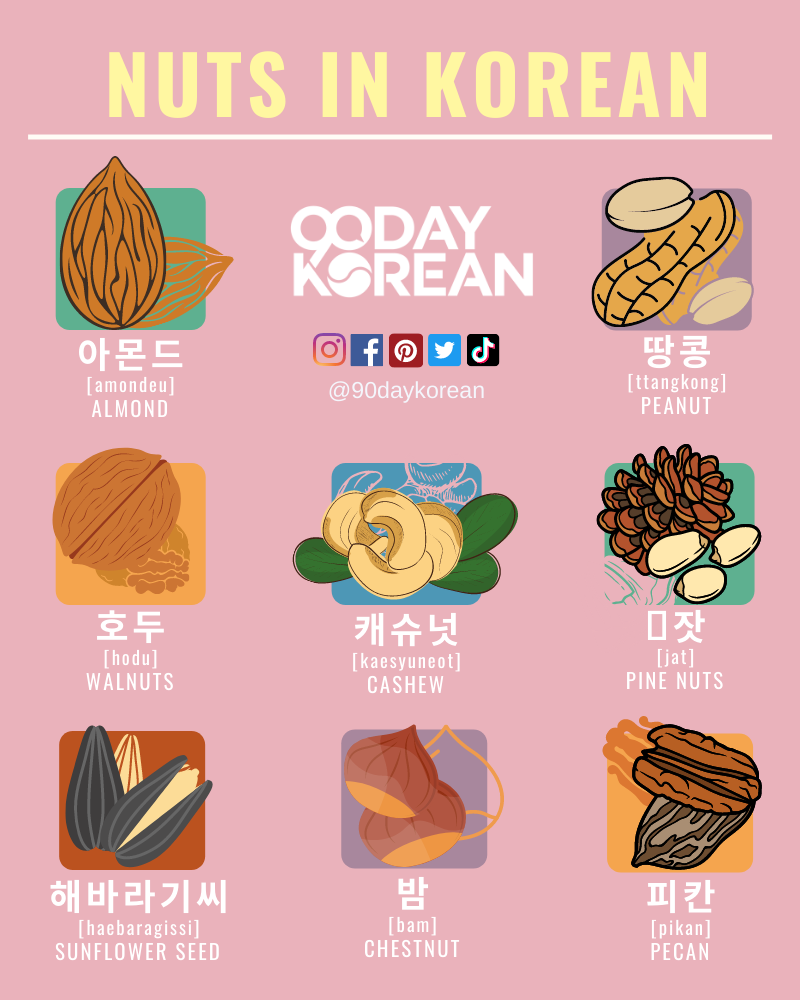




Thank you so much for this great work.????
Great, thanks for the comment! ^^ If you want to know more Korean lessons, you can also check our blog and visit our YouTube channel for articles and videos with great Korean content.
Very satisfying and helpful with much details I love the site.. Thanks for the efforts ????
Thanks for your kind words, Deborah! I’m glad that our article has been valuable to you. ^^ If you want to have more Korean lessons, you can also check our blog and visit our YouTube channel for articles and videos with great Korean content.
This site is literally the best Korean learning site I’ve come across. You guys should keep up with the good work
Thanks for your kind words, Faith! ^^ If you want to have more Korean lessons, you can also check our blog and visit our YouTube channel for articles and videos with great Korean content.